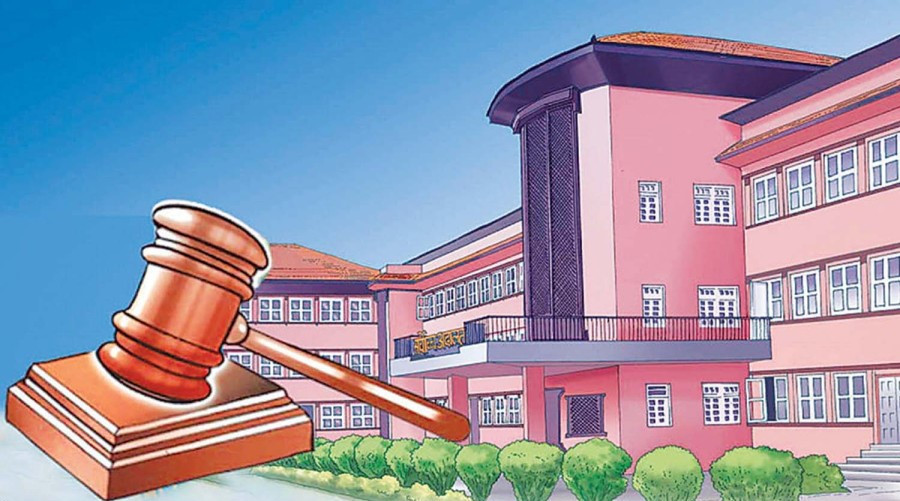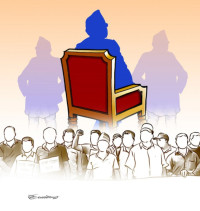Columns
For a victim-centric justice system
The criminal justice system exists not only to serve state interests but also to help the victims.
Nishant Pokharel
The classical criminal justice system primarily benefits either the state or the accused, leaving victims as the perpetual losers. In a criminal case, the police investigate, the prosecution prosecutes, and the judges administer a verdict. The victim only serves as an evidentiary cannon fodder. While the accused fights a case, the victim must make a case, and their fight for justice spans two frontiers: One against the state and the other against the accused perpetrator.
Thirteen years ago, in the Suntali Dhami case, wherein policemen were accused of raping Dhami (a policewoman), the Attorney General decided against prosecution. Dhami filed a case against it, and the Supreme Court ordered the Attorney General to prosecute it. This is an example of the struggles victims face to even make a case. The cases of Bharati Sherpa, Nirmala Panta, and Arati Sah demonstrate the ineptitude of the current state prosecution mechanism in providing representation and justice to victims.
Victims vs the structure
In a recent article in Online Khabar, Professor Rajit Bhakta Pradhananga, a legal expert, claimed Nepal’s leading role in victims’ rights in South Asia. His claim is grounded in Article 21 of the constitution, which recognises the rights of victims of crime as a fundamental right, and the Crime Victim Protection Act 2018, which includes rehabilitative and restorative provisions.
However, Nepal’s constitution grants only three rights to victims: Justice, reparation and rehabilitation. Regarding their right to participation, the constitution only specifies the right to information about their case and relegates victims to a passive observer. On the flip side, when Bharati Sherpa filed a writ at the Supreme Court against President Ramchandra Poudel’s decision to commute the sentence of Yog Raj Dhakal alias Regal, the court gave an active role to the victim in post-trial face, making it mandatory for the state to gather victims’ consent while reducing the sentence. This verdict positioned victims from the fringes of the criminal justice system to the heart of the criminal justice system. Based on the modern jurisprudence’s value of harmonisation and aligned interests, this case grants victims an active role in the state criminal justice system.
In an article “I Speak Nothing but the Truth, Your Honour,” published in the Nepali Times, Astha Dahal outlined the structural failure of criminal trials that strains truth-seeking. The article points out lapses, including contradictory provisions in Evidence Law and the Criminal Procedural Code allowing accused individuals to register accounts without cross-examination. However, victims are put on the stand and cross-examined.
The court aims to create an avenue for victims to voice their interests within the criminal justice system. However, the adversarial system turns trials into battlefield confrontations, making it difficult to address victims’ emotional trauma and private conflicts resulting from the offence.
In the adversarial system, the judge plays a passive role, and the lawyers assume an active role. The victims have no right to speak for themselves, and this treatment can be linked with the classical approach to human rights, which focuses on victims of abuse of power. These victims have a vertical power dynamic with the state, lacking influence against the state mechanism. The classical human rights approach mainly addresses this vertical relationship.
On the other hand, the relationship of victims of non-state crimes with the accused is horizontal, meaning that it has a power balance between the parties, contrary to vertical relationships, where there is a “power imbalance”. Hence, the human rights regime is focused on protecting the rights of the accused in a vertical relationship with the prosecution/state.
As the accused gain more substantial and procedural rights, the traditional divide between vertical and horizontal relationships becomes blurred, calling for an expansion of human rights protection.
Right to participation
One crucial right of victims is participation. Scholars debate whether victims’ participation should be limited to the pre-trial phase or extended to the trial and post-trial phases. The extent of participation remains a topic of discussion. While some scholars believe that victims’ right to participation should only be limited to the pre-trial phase, others demand extending it to the trial and post-trial phases. The recent judgment in the Bharati Sherpa v President case extended such rights to the post-trial phase. The victims have the right to participate, but the extent of participation within the criminal legal system has yet to be interpreted.
Without a clear demarcation, the verdict can disrupt the current criminal justice system, fostering a vicious cycle of over-criminalisation, over-prosecution and over-incarceration, potentially compromising the objectivity of justice. Nonetheless, envisioning a criminal justice system without victim participation is not beneficial. The criminal justice system exists not only for serving state interests but also for the victims. Without the active involvement of those directly affected by crimes, the system risks perpetuating a one-sided approach.
Recent legal developments, exemplified by the Bharati Sherpa v President case, stress the need to place victims at the core of the criminal justice system. Embracing participatory principles demands more than incremental improvements. The criminal justice system faces risks of erosion, unintended consequences and potential collapse if it lacks a clear structure for victim involvement. Reassessing the entire system is crucial to ensuring justice serves the state and the victims it aims to protect.




 15.12°C Kathmandu
15.12°C Kathmandu















